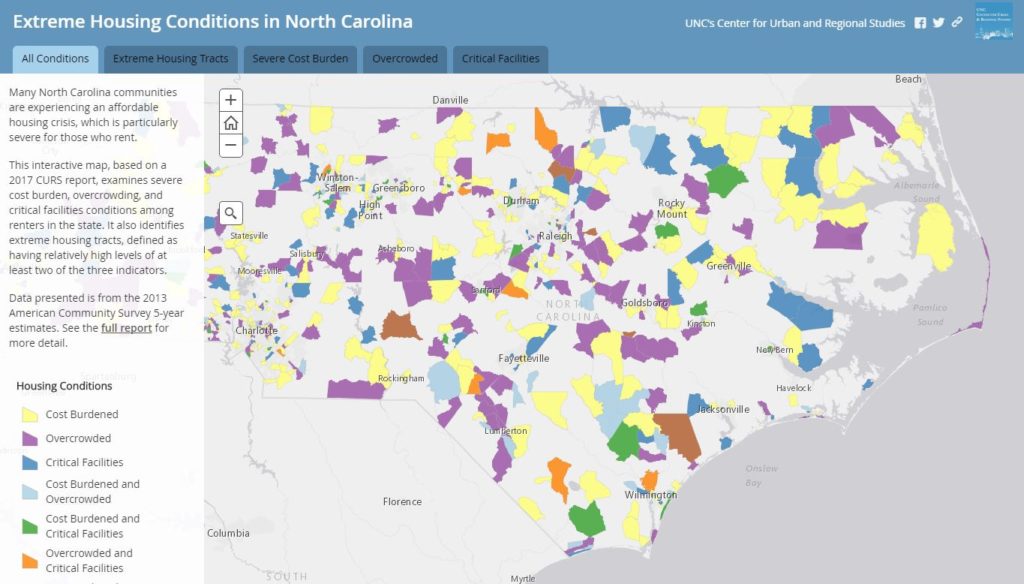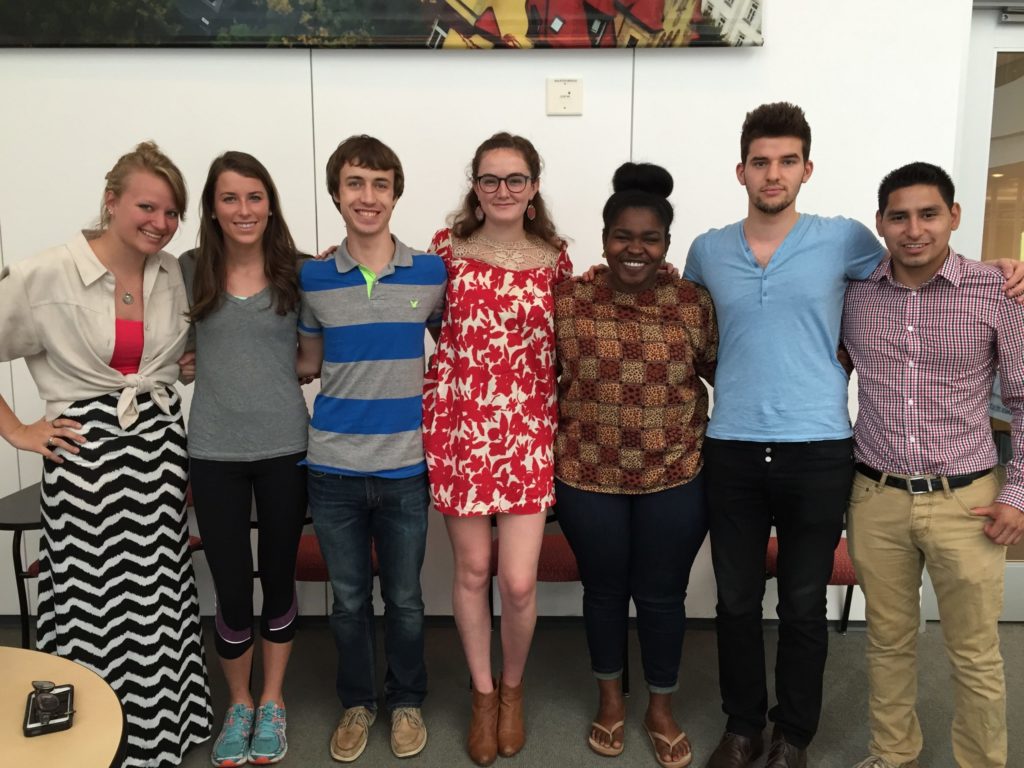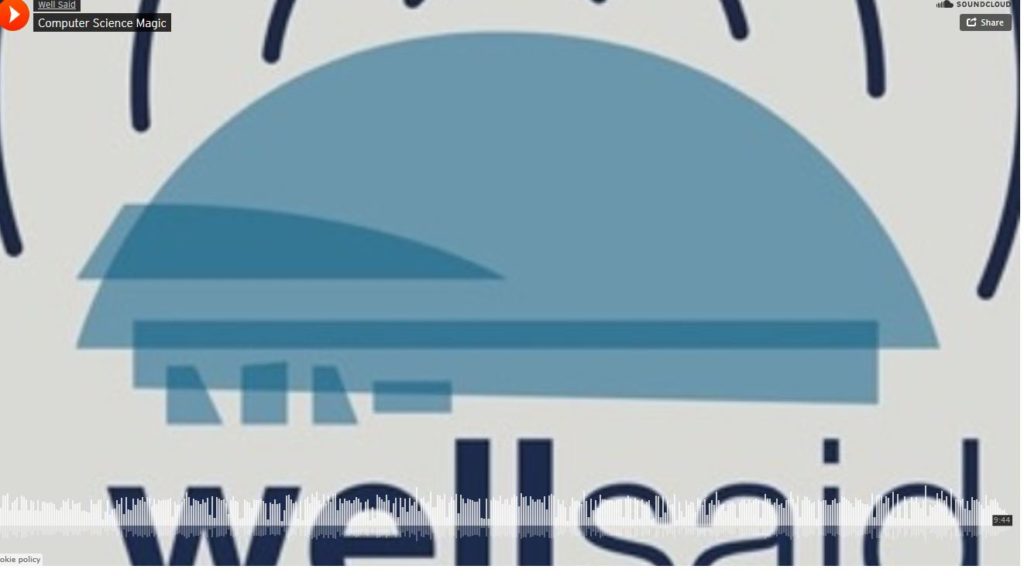 Many North Carolina communities are experiencing an affordable housing crisis, which is particularly severe for those who rent, says a new report published by researchers at UNC-Chapel Hill’s Center for Urban and Regional Studies. The report, Extreme Housing Conditions in North Carolina, examines severe housing cost burden, overcrowding and substandard housing conditions among renters in the state. It identifies areas of the state with extreme housing needs, defined as having relatively high levels of at least two of the following three indicators: severe housing cost burden, overcrowding and the lack of complete kitchen and bathroom facilities.
Many North Carolina communities are experiencing an affordable housing crisis, which is particularly severe for those who rent, says a new report published by researchers at UNC-Chapel Hill’s Center for Urban and Regional Studies. The report, Extreme Housing Conditions in North Carolina, examines severe housing cost burden, overcrowding and substandard housing conditions among renters in the state. It identifies areas of the state with extreme housing needs, defined as having relatively high levels of at least two of the following three indicators: severe housing cost burden, overcrowding and the lack of complete kitchen and bathroom facilities.
The report, authored by William Rohe, Cary C. Boshamer Distinguished Professor and director of CURS, Todd Owen, CURS associate director and Sarah Kerns, CURS researcher, analyzed data from the U.S. Census Bureau’s American Community Survey.
Among the report’s findings:
- Census tracts with extreme housing conditions were found in 46 of North Carolina’s 100 counties and in all regions of the state.
- As of 2013, more than 377,000, or 28.2 percent, of the State’s rental households experienced severe cost burdens, were overcrowded or lacked critical facilities.
- The number of severely cost-burdened households increased by 53,737 (or 22.5 percent) between 2008 and 2013.
- In eight census tracts, over 60 percent of renter households were severely cost burdened, with the highest percentage being 77.4 percent in a Wake County tract.
- The number of overcrowded households increased by 20,437, or 45.4 percent, between 2008 and 2013.
- In six census tracts, over 30 percent of renter households were overcrowded, with the highest rate being 53 percent in a Wake County tract.
“The report’s findings indicate that additional efforts are needed to improve housing conditions, reduce overcrowding, and lessen the housing cost burdens of renters in North Carolina,” said Rohe. “Without decent and affordable housing, it is difficult for many families in the state to lead happy and productive lives.”
The housing problems described by the report also increase public health care costs and reliance on social support programs and lower productivity. The authors suggest that combined efforts of state and local governments are needed to reverse the negative trends in housing affordability and overcrowding and improve the quality of life and economic productivity of North Carolinians.
The full report can be read here.
In addition to the report, an interactive map of Extreme Housing Conditions in North Carolina can be found at http://bit.do/CURS_Housing.
The Center for Urban and Regional Studies in the College of Arts and Sciences is a multi-disciplinary research center focusing on issues and problems faced by our nation’s cities and regions. Created in 1957, the Center supports research activity and collaboration across campus through its Faculty Fellows program that draws on the expertise of over 90 faculty members from over 20 schools, departments, curricula and research centers across the campus. The Center’s mission is to promote and support high-quality basic and applied research on planning, policy, and interdisciplinary social issues and challenges we face in urban, regional, and rural settings in North Carolina and around the world.




